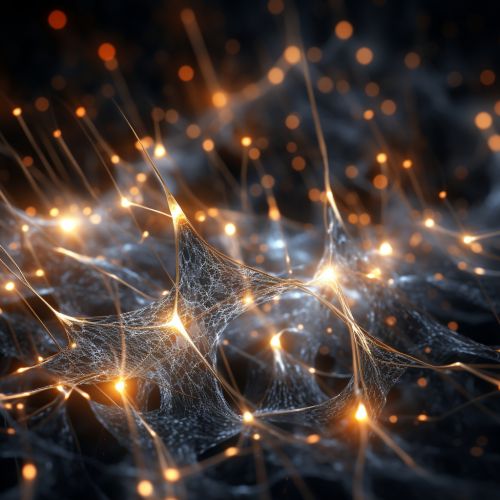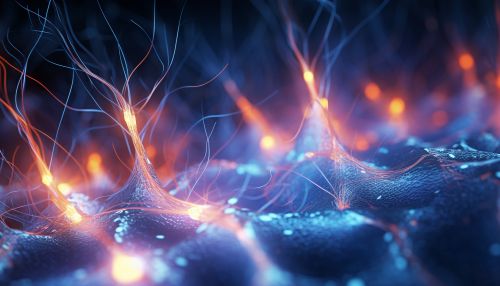Neural oscillation
Introduction
Neural oscillation, also known as brainwave activity, is a fundamental aspect of neuroscience that involves the rhythmic or repetitive neural activity in the central nervous system. This activity can be observed at various levels, from single neurons to groups of neurons sharing a common input, and can be measured using a variety of techniques, such as electroencephalography (EEG) and magnetoencephalography (MEG).


Types of Neural Oscillations
Neural oscillations can be categorized into several types based on their frequency, including delta, theta, alpha, beta, and gamma waves. Each of these types of waves is associated with different states of brain function and consciousness.
Delta Waves
Delta waves are the slowest type of neural oscillation, typically occurring at a frequency of less than 4 Hz. They are most commonly associated with deep sleep and are thought to play a role in the restoration and recovery of the brain.
Theta Waves
Theta waves typically occur at frequencies between 4 and 8 Hz and are most commonly associated with states of meditation, creativity, and the early stages of sleep. They are also thought to play a role in memory formation.
Alpha Waves
Alpha waves typically occur at frequencies between 8 and 12 Hz and are most commonly associated with states of relaxation and calm alertness. They are also thought to play a role in attention and the processing of sensory information.
Beta Waves
Beta waves typically occur at frequencies between 12 and 30 Hz and are most commonly associated with states of active thinking, focus, and alertness. They are also thought to play a role in decision making and problem solving.
Gamma Waves
Gamma waves are the fastest type of neural oscillation, typically occurring at frequencies above 30 Hz. They are most commonly associated with states of high-level information processing and are thought to play a role in perception, consciousness, and cognitive functioning.
Role in Brain Function
Neural oscillations play a critical role in a variety of brain functions. They are thought to facilitate communication between different parts of the brain, regulate the timing of neural activity, and contribute to the formation of neural networks. They are also thought to play a role in a variety of cognitive processes, including attention, memory, and perception.
Communication
Neural oscillations are thought to facilitate communication between different parts of the brain by synchronizing the activity of neurons. This synchronization allows for the efficient transfer of information across different brain regions.
Timing
Neural oscillations are thought to regulate the timing of neural activity, allowing for the precise coordination of neural events. This timing is critical for a variety of cognitive processes, including perception, attention, and memory.
Network Formation
Neural oscillations are thought to contribute to the formation of neural networks by promoting the synchronization of neural activity. This synchronization allows for the formation of functional networks of neurons that work together to process information.
Clinical Significance
Abnormalities in neural oscillations have been associated with a variety of neurological and psychiatric disorders, including epilepsy, schizophrenia, and Alzheimer's disease. As such, the study of neural oscillations has important implications for the understanding and treatment of these conditions.
Epilepsy
In epilepsy, abnormal neural oscillations can result in seizures. These seizures are characterized by periods of excessive and synchronous neural activity.
Schizophrenia
In schizophrenia, abnormalities in neural oscillations have been associated with cognitive deficits. These deficits can include impairments in attention, memory, and perception.
Alzheimer's Disease
In Alzheimer's disease, abnormalities in neural oscillations have been associated with cognitive decline. This decline can include impairments in memory, attention, and cognitive functioning.
Future Directions
The study of neural oscillations is a rapidly evolving field with many promising future directions. These include the development of new techniques for measuring and analyzing neural oscillations, the exploration of the role of neural oscillations in cognition and behavior, and the development of new treatments for disorders associated with abnormal neural oscillations.
